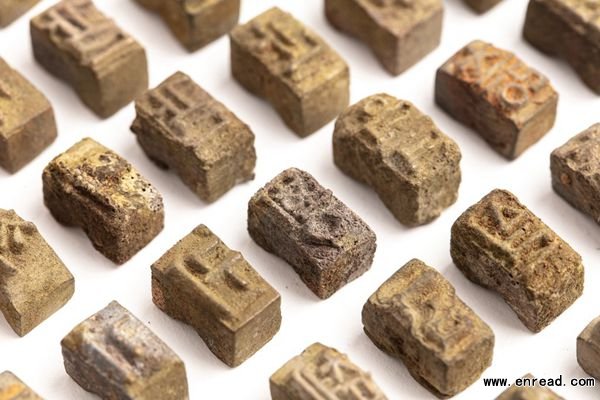| ||||||||||||||||||||||||||||||||||||||||||||||||
|
据韩联社29日报道,最近,韩国在首尔仁寺洞遗址发掘大量朝鲜王朝初期的文物。其中金属活字的出土,尤其引发关注。

韩联社称,这是韩国发现最早的韩文金属活字。
South Korea's Cultural Heritage Association (CHA) said movable metal type (printing) blocks, were found in a pot during a recent archaeological excavation1 in Seoul, which could be the earliest known depicting2 Hangeul.
韩国文化遗产协会表示,最近在首尔进行的一次考古挖掘中,在一个罐子里发现了活字金属印刷块,这可能是目前已知的最早的韩文金属活字。
据推测,这批金属活字制作于15世纪中叶世宗大王执政时期,距今有500多年历史。一共出土1600多个,包括1000多个汉字金属活字,以及600多个韩文金属活字。
The metal type blocks—about 1,000 of Chinese letters and about 600 of Korean letters—include those believed to have been produced in the mid-1400s.
据推测这些活字金属印刷块制作于15世纪中叶,包括1000多个汉字和600多个韩文。
除了金属活字之外,此次出土的还有天文钟“日星定时仪”的零部件、疑似滴漏零件的“筹箭”以及铜钟等古代文物。其中铜钟上刻有汉字“嘉靖十四年乙未四月日”。
The cultural relics3 unearthed4 this time also include a copper5 artifact believed to be a component6 of either of two water clocks, each created in 1438 and 1536 and installed at royal palaces. It is presumed to be a device that caused a ball to roll to mark the hour when the water level rose.
这个铜零件被认为是两个钟的零件,这两个水钟分别制造于1438年和1536年,放置在皇家宫殿里。据推测,这是一种装置,当水位上升时,它使一个球滚动以表示时间。
点击  收听单词发音 收听单词发音
|
||||||||||||||||||||||||||||||||||||||||||||||||
- 发表评论
-
- 最新评论 进入详细评论页>>



